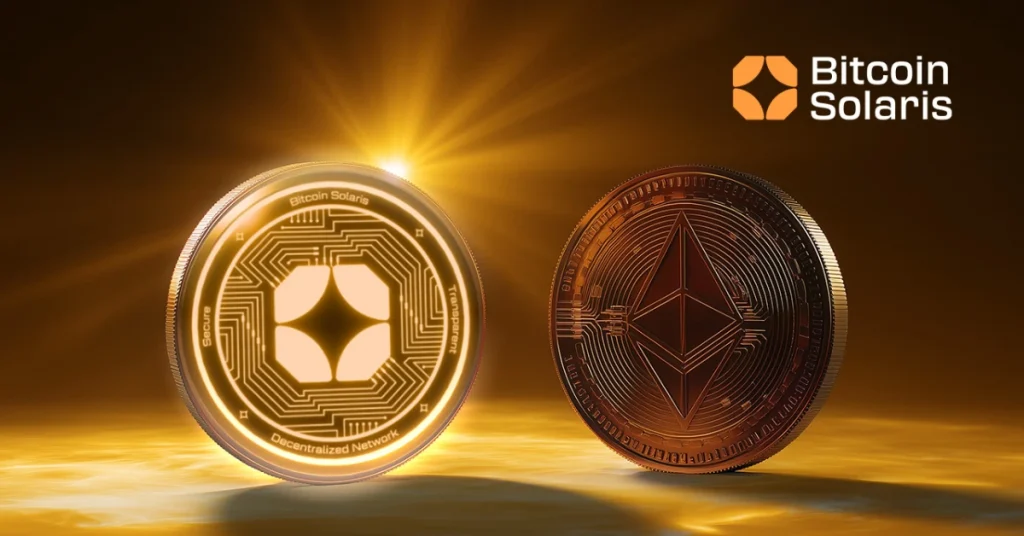Bitcoin Solaris Solves Ethereum’s Gas Fee Problem: New Protocol Could Generate 50x Returns for Early Investors

The post Bitcoin Solaris Solves Ethereum’s Gas Fee Problem: New Protocol Could Generate 50x Returns for Early Investors appeared first on Coinpedia Fintech News
Ethereum revolutionized blockchain with smart contracts and decentralized apps, but it came with one major problem: gas fees. At peak times, simple transactions can cost users more than the transaction itself. That bottleneck has slowed adoption, especially in emerging markets where affordability is key.
Now, a powerful new blockchain project has entered the scene: Bitcoin Solaris (BTC-S). Designed to solve Ethereum’s core limitations, including its notorious gas problem, Bitcoin Solaris is already drawing massive interest from crypto analysts and early investors who believe it could deliver 50x returns in the years ahead.
Ethereum’s Impact—and Its Frustrating FlawEthereum made blockchain programmable and opened the doors to DeFi, NFTs, and Web3. But its congestion-prone network and expensive fees have created friction for both users and developers. Many projects have had to migrate away or build costly layer-2 solutions to remain usable.
Even with the Ethereum 2.0 upgrade, gas costs haven’t disappeared — just shifted. This leaves the door open for new platforms that offer:
- Lower transaction costs
- Faster finality
- Better scalability for real-world apps
Bitcoin Solaris is stepping through that door, offering a seamless, efficient solution to the problem Ethereum still hasn’t solved.
Bitcoin Solaris: Designed to Eliminate Gas FrictionBitcoin Solaris introduces a hybrid dual-layer protocol built to scale while keeping fees ultra-low — even during high traffic periods. Its design delivers the performance Ethereum lacks:
Dual-Layer Architecture- Base Layer (Proof-of-Work) for security
- Solaris Layer (Delegated Proof-of-Stake) for high-speed smart contract execution
- 10,000+ transactions per second (TPS)
- 2-second finality
- 99.95% less energy consumption than Ethereum or Bitcoin
- Zero congestion impact on fees
Smart contracts and DeFi applications run on the Solaris Layer, meaning even at scale, users enjoy minimal fees and fast confirmations — solving the very issue that’s plagued Ethereum since its inception.
Helios: The Engine Powering Scalable DeFiAt the heart of Bitcoin Solaris’s low-fee, high-performance system is Helios — a framework that unlocks advanced decentralized finance capabilities without compromising usability.
Helios enables:
- Instant swaps and low-slippage decentralized exchanges (DEXs)
- Lending and borrowing protocols with low gas and fast processing
- Cross-chain functionality that bridges Bitcoin Solaris with ecosystems like Solana and Ethereum
- Yield farming strategies with automated liquidity and rewards
New Token, Familiar Strength—Meet BTC-S Today
Unlike Ethereum’s expensive DeFi tools, Helios is accessible, affordable, and scalable, enabling projects and users to interact with DeFi in real time, with no prohibitive costs.
Bitcoin Solaris is now in Presale Phase 1, and the excitement is building fast. Here’s what early buyers need to know:
- Current Price: $1.00
- Next Phase: $2.00
- Launch Price: $20.00
- Potential Gain: Up to 1,900%
With a fixed total supply of 21 million BTC-S, the opportunity to get in before exchange listings is narrowing — and early entry has historically been the key to outsized gains in crypto.
In addition, Bitcoin Solaris active presence on X ensures users are always informed, with updates and announcements shared consistently to build trust and engagement.
Double Rewards Referral Program: Earn More by SharingTo accelerate adoption, Bitcoin Solaris has introduced a dual-sided referral system during the presale:
- Referrers earn 5% in BTC-S tokens for each successful referral
- Referred users receive a 5% bonus on top of their token purchase
- Rewards are automatic and credited in real time
How to get started:
- Visit bitcoinsolaris.com
- Log in to your account and grab your referral link
- Share it across social platforms or directly with friends
- Earn passive BTC-S while helping grow the network
Ethereum proved what was possible—but also exposed major flaws, especially high gas fees. Bitcoin Solaris delivers the solution Ethereum couldn’t, empowering users, developers, and early investors alike.
With audited smart contracts, Helios-powered DeFi, mobile mining, and a community-driven referral system, Bitcoin Solaris is a full crypto ecosystem. The presale is live, the tech is working, and with real utility and adoption ahead, 50x returns may not be far off.
The Future of Bitcoin Starts Here—Be Part of BTC-S
For more information on Bitcoin Solaris:
- Website: https://www.bitcoinsolaris.com/
- Telegram: https://t.me/Bitcoinsolaris
- X: https://x.com/BitcoinSolaris
